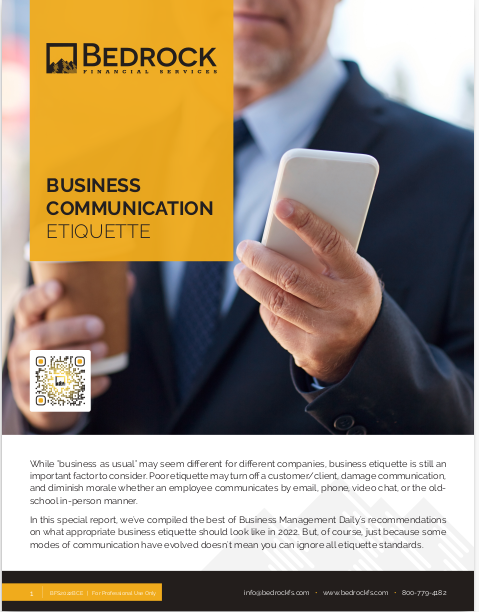Key Takeaways
-
When a lead resists being sold, it often signals a need for trust, clarity, or control—not an outright rejection. Adjusting your approach can preserve and even strengthen the relationship.
-
Reframing conversations from “sales” to “solutions” helps you connect on a more human level, leading to greater client openness and long-term retention.
The Resistance Is Real—But It Has a Root
You’re on a call. The lead sounds polite, but the tone is clear: “I’m not looking to buy anything right now.”
It can feel like a dead end. But what sounds like a hard no is often just a defense mechanism. In 2025, your leads are more educated, more advertised-to, and more guarded than ever. They don’t want to be sold because they’ve been sold at too many times before.
So what do you say to someone who doesn’t want a sales pitch?
You shift. Not the product. Not your facts. You shift how you’re showing up in that moment.
Read the Room First
Before speaking, observe what kind of “no” you’re actually hearing:
-
Is it a brush-off to exit the conversation quickly?
-
Is it a soft no because they’re unsure?
-
Is it a deeper resistance due to past experiences?
Each version calls for a different kind of reply. But all of them share one solution: don’t lead with persuasion. Lead with presence.
When a lead says they don’t want to be sold, it usually means one of these things:
-
They don’t feel in control of the conversation.
-
They don’t understand what you do.
-
They think you only want their money.
-
They’ve been burned before.
Reframe the Interaction Immediately
The fastest way to defuse sales resistance is to remove the pressure they feel.
Instead of saying:
“Let me tell you why this is right for you.”
Say something like:
“I’m not here to push anything. I’m here to see if anything you’re dealing with is something I can help make easier.”
This shift does a few important things:
-
Acknowledges the lead’s autonomy
-
Aligns you as a problem-solver, not a product-pusher
-
Opens the door to a real conversation
Make Them the Guide, Not the Audience
Insurance conversations often fail because they feel like monologues. When you talk at someone, they tune out. Especially when they don’t want to be sold.
Flip it. Ask thoughtful questions that put the lead in charge:
-
“Can I ask what made you look into this at all?”
-
“Is there something you’re trying to figure out right now that’s felt frustrating?”
-
“Have you had someone explain this in a way that actually made sense?”
This creates space for them to express uncertainty without feeling weak. You’re building rapport without forcing it.
Slow the Tempo, Shorten the Talk
When someone says they don’t want to be sold, they’re telling you the pace is too fast. Your job is to slow down without losing momentum.
Here’s how to do that:
-
Keep explanations under 45 seconds.
-
Pause for input every 1-2 sentences.
-
Let silence work. If they don’t reply right away, don’t rush in to fill it.
You’re showing respect for their time and processing speed. That kind of respect builds trust fast.
Offer a Next Step That Requires No Commitment
Pressure breeds resistance. So take pressure off the table.
Instead of asking, “Do you want to move forward today?” try:
-
“Would it help if I sent a short breakdown so you can look at it when it’s not in real-time?”
-
“I can send a 2-minute summary that just shows the difference between options. Want that?”
This gives the lead a path forward on their terms. They stay in control—but you’re still the one moving the process along.
Be Transparent About Your Role
People don’t hate agents. They hate not knowing if you’re working for them or against them.
When you’re upfront about how you get paid, how you make recommendations, and what you don’t do, it disarms skepticism.
For example:
“Just so you know, I’m not tied to one company, and I don’t get bonuses for pushing certain plans. I work to help people figure out what actually fits. If nothing fits, that’s okay too.”
This tone is clear, professional, and neutral—not apologetic. That’s exactly what skeptical leads respond to in 2025.
Acknowledge the Elephant: Past Experiences
If a lead mentions a bad past experience, don’t ignore it. Validate it.
Say something like:
“Honestly, I hear that a lot. And I’d probably feel the same way if I were in your shoes.”
That sentence alone creates emotional alignment. It doesn’t excuse bad actors in the industry, and it doesn’t throw anyone under the bus. It just says, “You’re not crazy for feeling cautious.”
Don’t Pitch the Product—Describe the Problem
Instead of saying:
“This policy covers A, B, and C.”
Say:
“Most people I talk to are worried about X. That shows up in different ways, like [consequence A] or [cost B]. Do any of those sound familiar?”
This creates a moment of reflection, which is more powerful than persuasion. If a lead sees their situation in your words, they’ll invite the pitch themselves.
Match the Format to the Energy
Some leads need to hear your voice to trust you. Others need to see something visual. Still others want to read and decide alone.
Ask directly:
-
“Do you prefer quick phone calls or emails you can scan through?”
-
“Would a one-page side-by-side comparison be helpful, or should we talk through it together?”
This small act of customization communicates huge respect.
Keep Follow-Ups Human, Not Mechanical
If a lead isn’t ready to talk today, don’t disappear. But also don’t send robotic follow-ups.
Instead of:
“Just checking in to see if you’re ready to talk.”
Try:
“I remember you mentioned [insert detail they shared]. Hope that’s going well. If you ever want help untangling the options, I’m here.”
Personalized check-ins remind them you’re a human, not a sales sequence.
When Silence Means No—And When It Doesn’t
In 2025, silence from a lead can mean many things:
-
They’re overwhelmed
-
They forgot
-
They’re still deciding
-
They don’t want to respond
You don’t need to guess which. But you can give them an out that preserves the relationship:
“Totally understand if now’s not the right time. Just let me know if it ever becomes something worth revisiting.”
This kind of message keeps the door open and earns you future consideration.
The Long-Term Game of Respect-First Selling
In industries like insurance, where decisions feel weighty and trust is hard-won, respect is your biggest differentiator.
It doesn’t matter how perfect your product is. If your lead feels sold instead of heard, they won’t move forward.
But if they feel:
-
Seen
-
Understood
-
Free to choose
Then even the most reluctant lead can become your strongest client.
Build Trust, Don’t Trigger Resistance
Every skeptical lead you talk to is giving you a chance. A chance to not be like everyone else.
When you speak with leads who don’t want to be sold, remember: their resistance is a signal, not a shutdown. It tells you where the conversation needs to go.
At Bedrock Financial Services, we help insurance professionals like you connect with more qualified leads who actually want to talk. But more than that, we provide systems and messaging strategies that help you turn skepticism into trust—without selling harder.
If you’re ready to work smarter with leads who need a different kind of conversation, sign up today. Let us help you build a practice based on clarity, confidence, and connection.







